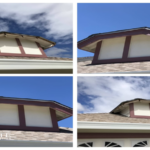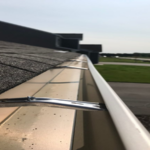- Measure your gutters. This is critical, as you need to make sure your gutters are the right size for your home. If they’re too small, they won’t be able to handle the amount of water coming off your roof. If they’re too big, they’ll be too heavy and could pull away from your home.
- Choose the right material. There are a few different materials to choose from, and each has its own advantages and disadvantages. Aluminum is the most popular choice because it’s lightweight and doesn’t rust, but it’s also the most expensive. Vinyl is less expensive and won’t rust, but it can crack in cold weather. Galvanized steel is the least expensive option, but it’s also the heaviest and most likely to rust.
- Install gutter guards. Gutter guards are a wise investment, as they’ll keep leaves and other debris from clogging up your gutters. This will make them last longer and work more effectively.
- Hire a professional. Unless you’re a experienced do-it-yourselfer, it’s best to hire a professional to install your gutters. They’ll have the experience and know-how to get the job done right.
What are some common mistakes that people make when installing gutters?
- One of the most common mistakes is not taking into account the slope of the roof. The gutters need to be installed at a slight angle so that the water can run off properly.
- Another common mistake is not properly attaching the gutters to the fascia board. If the gutters are not properly attached, they can come loose and cause water damage to the home.
- Another mistake that is often made is not cleaning the gutters on a regular basis. Leaves and other debris can build up in the gutters and cause them to become clogged. This can lead to water damage to the home as well.
What is the rule of thumb for gutter installation?
There is no definitive answer to this question as it depends on a number of factors, such as the type of gutters being installed, the size and slope of the roof, the climate, and the amount of rainfall the area receives. However, as a general rule of thumb, it is generally recommended that gutters be installed at a minimum of every 20 feet, and more frequently if the roof is large or the climate is particularly rainy.
How do you tell if gutters are installed correctly?
- Make sure that the gutters are securely attached to the house and that there are no gaps or spaces between the gutter and the house.
- Inspect the inside of the gutters to make sure that there is no debris or buildup that could cause clogs.
- Look for any signs of leaks, such as water stains on the inside of the gutters or on the ground below the gutters.
- Make sure that the gutters are sloped properly so that water can drain properly.
- Inspect the downspouts to make sure that they are clear and free of debris.
Should there be a gap between roof and gutter?
There are a few reasons for having a gap between your roof and your gutter. The most common reason is to allow for expansion and contraction of the roof during different weather conditions. If your roof is attached directly to your gutter, then the expansion and contraction could cause damage to the gutter or the roof. Another reason for having a gap is to allow water to drain properly from the roof. If the gap is too small, then the water could back up under the shingles and cause leaks. The size of the gap is usually about 1/4 inch.
Should gutters be nailed or screwed in?
There is no definitive answer to this question as there are pros and cons to both methods. Nailing gutters in place can provide a more secure hold, but it is also more likely to cause damage to the gutters if they need to be removed at a later date. Screwing gutters in place can make them easier to remove if necessary, but it is important to make sure that the gutters are securely fastened to avoid any potential leaks.
Do you need drip edge with gutters?
Drip edge is a strip of metal that is installed on the edge of your roof. It helps to keep water from seeping under your shingles and causing damage to your roof. Gutters are installed underneath your drip edge to catch the water and channel it away from your home.
Having drip edge with your gutters helps to protect your roof from water damage and extends the life of your gutters. It is a good idea to have drip edge installed when you have your gutters installed.
Do gutter hangers go through drip edge?
Gutter hangers are a type of bracket that is used to attach gutters to a building. They are typically made of metal or plastic and have a variety of different designs. Some gutter hangers have a lip that goes over the edge of the gutter, while others have a hook that goes under the drip edge. There are also gutter hangers that have both a lip and a hook. It is important to choose the right type of gutter hanger for your particular application.
What’s better vinyl or aluminum gutters?
There are pros and cons to both vinyl and aluminum gutters. It really depends on your budget and what you are looking for in terms of durability and maintenance.
Vinyl gutters are less expensive than aluminum gutters and are easier to install. They are also available in a wide range of colors. However, vinyl gutters can become brittle in cold weather and may sag over time.
Aluminum gutters are more expensive than vinyl gutters, but they are more durable and require less maintenance. They are also available in a wide range of colors. However, aluminum gutters can become corroded over time.
Bottom Line
If you’re considering having gutters installed on your home, there are a few things you should keep in mind to ensure a successful installation. First, make sure you choose a reputable and experienced contractor. Second, be sure to get a written estimate that includes a detailed description of the work to be performed. And finally, make sure you understand the warranty and any other terms and conditions before signing on the dotted line. By following these tips, you can be confident that your new gutters will be installed correctly and provide years of trouble-free service.














